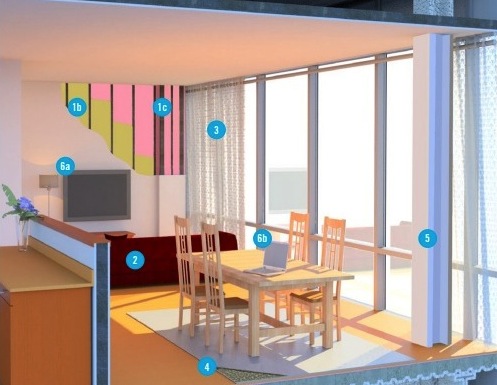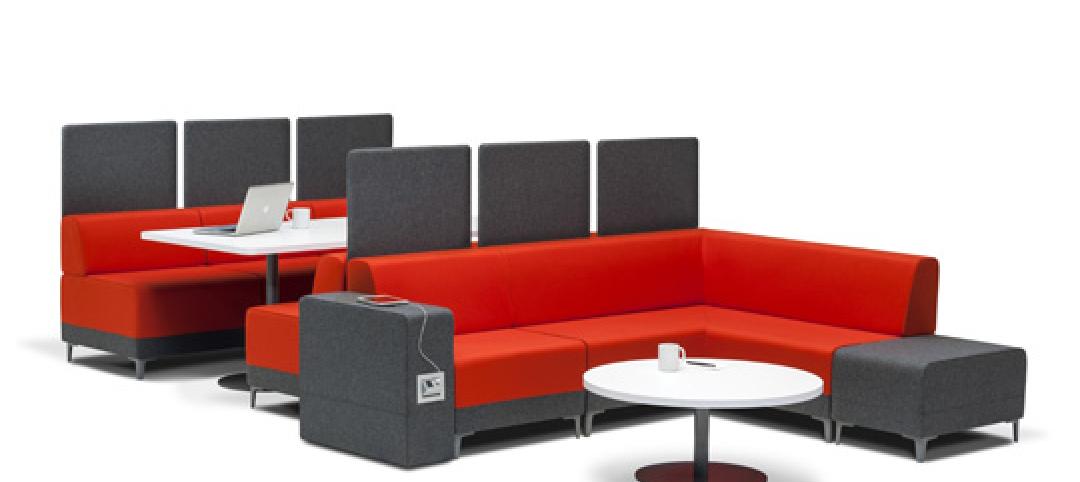Global architecture and design firm Perkins+Will has released new research in response to the need for architects and interior designers to develop a better understanding of flame retardants and their impact on health.
The white paper, “Healthy Environments: Strategies for Avoiding Flame Retardants in the Built Environment,” was developed by Perkins+Will’s Healthy Materials Group and Science Fellow Michel Dedeo. It identifies both new and existing opportunities to design healthier buildings without compromising fire safety or code compliance.
Flame retardants in the built environment are associated with a range of health impacts including cancer, endocrine disruption, and neurodevelopmental problems. Many flame retardants are persistent, bioaccumulative, and/or toxic, and their use in buildings is largely avoidable.
Perkins+Will’s white paper includes a list of 193 flame retardants, including 29 discovered in building and household products, 50 discovered in the indoor environment, and 33 discovered in human blood, milk, and tissues.
The research can help designers identify which products should be subjected to extra scrutiny during the design and construction process and provides options for less hazardous alternatives. The white paper also helps to identify gaps in current understanding of the sources and paths of chemical exposure.
“We want to bring awareness to this important issue impacting the health and wellbeing of building occupants,” said Perkins+Will’s Healthy Materials Leader Suzanne Drake. “The research we have conducted is a valuable resource for identifying healthy alternatives to flame retardant building materials.”
Related Stories
| Jul 2, 2014
Emerging trends in commercial flooring
Rectangular tiles, digital graphic applications, the resurgence of terrazzo, and product transparency headline today’s commercial flooring trends.
| Jun 30, 2014
Arup's vision of the future of rail: driverless trains, maintenance drones, and automatic freight delivery
In its Future of Rail 2050 report, Arup reveals a vision of the future of rail travel in light of trends such as urban population growth, climate change, and emerging technologies.
| Jun 18, 2014
Arup uses 3D printing to fabricate one-of-a-kind structural steel components
The firm's research shows that 3D printing has the potential to reduce costs, cut waste, and slash the carbon footprint of the construction sector.
| Jun 12, 2014
Austrian university develops 'inflatable' concrete dome method
Constructing a concrete dome is a costly process, but this may change soon. A team from the Vienna University of Technology has developed a method that allows concrete domes to form with the use of air and steel cables instead of expensive, timber supporting structures.
| Jun 2, 2014
Parking structures group launches LEED-type program for parking garages
The Green Parking Council, an affiliate of the International Parking Institute, has launched the Green Garage Certification program, the parking industry equivalent of LEED certification.
| May 29, 2014
7 cost-effective ways to make U.S. infrastructure more resilient
Moving critical elements to higher ground and designing for longer lifespans are just some of the ways cities and governments can make infrastructure more resilient to natural disasters and climate change, writes Richard Cavallaro, President of Skanska USA Civil.
| May 23, 2014
Top interior design trends: Gensler, HOK, FXFOWLE, Mancini Duffy weigh in
Tech-friendly furniture, “live walls,” sit-stand desks, and circadian lighting are among the emerging trends identified by leading interior designers.
| May 20, 2014
Kinetic Architecture: New book explores innovations in active façades
The book, co-authored by Arup's Russell Fortmeyer, illustrates the various ways architects, consultants, and engineers approach energy and comfort by manipulating air, water, and light through the layers of passive and active building envelope systems.
| May 19, 2014
What can architects learn from nature’s 3.8 billion years of experience?
In a new report, HOK and Biomimicry 3.8 partnered to study how lessons from the temperate broadleaf forest biome, which houses many of the world’s largest population centers, can inform the design of the built environment.
| May 13, 2014
19 industry groups team to promote resilient planning and building materials
The industry associations, with more than 700,000 members generating almost $1 trillion in GDP, have issued a joint statement on resilience, pushing design and building solutions for disaster mitigation.

















